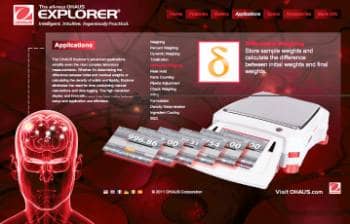By Susan Dawson
The laboratory of our 325-bed community hospital serves an inpatient, outpatient, and outreach population, and handles more than 1 million chemistry/immunoassay tests per year. With 25% of our work requested as stat, single specimens divided into 1–4 aliquots, added requests for both inpatient and outpatient work, and an increasing demand for faster turnaround time, there was a need for not only an automation system and data manager that would consolidate and expedite reporting while providing us with editing capabilities.

Centralink functions for order processing and result upload to and from a laboratory information system (LIS) seem simple enough to one observing the operations of the system. The LIS sends an order to the CentraLink. The CentraLink sends the results back to the LIS upon test completion. However, the functions that fill the middle, the unseen portion of what CentraLink does, is what has allowed our laboratory to consolidate functions, interfaces, and instruments. These functions have provided us with the capability to move to total autovalidation in the chemistry and immunochemistry section.
Order Handling
The CentraLink has user-definable options that allow the system to be customized for each institution’s needs. The user, during initial setup, predefines the specimen type for each test; therefore, the CentraLink will not allow a test to be ordered on an inappropriate sample type. The account defines the mnemonic for each test or panel order as well. Duplicate orders, entered either at the LIS or through manual order entry, are automatically prevented by CentraLink without operator intervention. The information attached to a given specimen number (bar-code number) can include demographic information appropriate to each institution’s needs or merely a mnemonic for the test being ordered. Any tests added to a specimen after the initial testing can be automatically transferred from the LIS or entered manually at the CentraLink.
As a part of the WorkCell, the CentraLink accepts the order from the LIS or manual entry and broadcasts this information to the LineMaster and Router computers, which then determine the routing of the specimen on the track system. This is done automatically without any operator intervention. As each specimen reaches the instrument for testing, the bar code is read and the instruments query the CentraLink for tests orders. The CentraLink answers the queries without delay and the testing is initiated.
The order functions are simple and straightforward and require little if any operator intervention in our laboratory. Orders from our LIS are automatically downloaded to CentraLink upon receipt of the specimen in the laboratory. By the time the specimen is processed in the receiving area, the system is ready and waiting to perform the requested testing. Add-ons are never a problem as the request is added to the existing bar-coded specimen when appropriate. The front-end, preanalytical ordering functions have been consolidated with the use of CentraLink as the hub. The host query from the instruments is made to CentraLink instead of the LIS, which in our situation has increased the reliability of this function and eliminated delays due to increased volumes that affected the speed with which our LIS was able to respond to the query. Overall, CentraLink has streamlined the receipt-to-test initiation time and reduced technologist time for initial order entry and add-on testing.
Result Disposition
CentraLink has impacted the area of result disposition to the greatest degree. The result handling that we currently use on CentraLink evolved over time, as we were able to obtain needed functions and capture necessary information for documentation purposes through our work with Bayer and our LIS vendor. From the start, our laboratory chose to utilize the review and edit by exception option in CentraLink. This meant that if the results did not meet predetermined user-defined criteria for all tests ordered, the results would be stopped in the review/edit filter and the technologist would be required to review them in CentraLink prior to their being uploaded to the LIS. This was a process and function that we had used on previous chemistry analyzers, but it was new to the immunoassay systems. Instead of review and edit functions at each instrument, the review and edit functions are consolidated at CentraLink, thereby eliminating redundancy at multiple workstations. In addition to evaluating the result for compliance to an acceptable range, other filters that could be used included delta checks, instrument flags, and QC failures. It was these additional review functions that made the result/edit function a complete package. As the user, we were able to define the delta-check limits for each test, delineate severity for each of the flags using a numeric system, and validate whether specimens were undergoing automated repeat analysis at the instrument level through the instrument flags.
The completeness of information and specimen/result disposition options on the CentraLink review/edit screens allowed for optimal operation. During review of results, the technologist can see all results at the same time for any given specimen. In addition, the results of the previous specimen from that patient (if there are any), including the date and time of that specimen, will appear on the screen as well. Flagging for failure to meet the review range, delta-check criteria, QC for the test, and instrument-associated errors also appear. Tests or results that do not meet the criteria are easily identified and the disposition of each test can be individually determined at that point. Options for disposition include validation, repeat, revert, and omit. With connection to a WorkCell system, if the technologist selects the repeat option, the CentraLink will automatically generate an order for repeat testing that is sent to the track. The specimen will then be automatically placed back on the track and delivered to the instrument for repeat analysis in less than 3 minutes. Subsequently, the repeated result will appear next to the original result on the CentraLink review/edit screen, and the technologist can choose which result to send to the LIS.
At our institution, prior to the advent of CentraLink, we reviewed abnormals and instrument flags at the chemistry system computer and delta checks at the LIS. Possible repeats for verification could take place at one or more of these review points. The results from various sections, immunochemistry, general chemistry, toxicology, and lipids were all done at different workstations at different times with each technologist correlating and verifying results independently. The CentraLink is now used as the only review/edit station for result reviewing for chemistry and immunochemistry specimens. A technologist at a single workstation is able to review results from all chemistry disciplines that require review due to abnormal results, delta-check compliance, and instrument flagging. Repeats can be ordered and reviewed, results manually edited or verified, and comments entered. The functional options and review filters allow us to operate with full confidence that nothing has been missed. The consolidation of these functions, which used to be done in multiple steps, at both the individual instruments and at our LIS has allowed us to save considerable time. Through the use of the WorkCell and CentraLink, we were able to reduce the routine turnaround time from receipt to verified result from 95 minutes to 64 minutes.
Implementation of Autovalidation
The final step was the implementation of Autovalidation for results handled by the CentraLink. The CentraLink has the ability to identify the instrument generating the result and the technologist reviewing the result. This information is sent in the data stream to the LIS, therefore providing an audit trail that meets regulatory requirements. Results meeting the review criteria in CentraLink no longer sit waiting for result filing in the LIS. Results validated following review in CentraLink are autoverified as well, with the exception of critical values, which require further documentation in the LIS. Since the implementation of autovalidation, the turnaround time has dropped to under 60 minutes for routine specimens. The turnaround time for stats currently ranges between 30 and 33 minutes for all stat specimens for both chemistry and immunochemistry that are run on the WorkCell line.
The CentraLink computer functions that occur between order download and result upload have provided us with the capability to streamline operations and provide results and services to our customers with quality, consistency, and efficiency.
We currently handle 500 samples per day with an average of five tests per sample with no aliquotting. Before CentraLink and Workcell, we processed these samples on up to seven different instruments and utilized 23% more tubes, most of which were aliquotted specimens. We decreased the number of workstations from four to three and eliminated 1.5 employees through attrition. Currently, we operate the WorkCell with two technologists on day shift, one on afternoon/evening shift and one on night shift. We have increased our testing menu without the need for additional staff. Our testing volume has increased by 18% over the past 3 years. We currently average more than 14,000 tests per technical full-time employee on a yearly basis. The volume of testing was made possible and practical through the use of the CentraLink and WorkCell systems.
Susan Dawson is lab manager at Swedish Covenant Hospital, Chicago.



